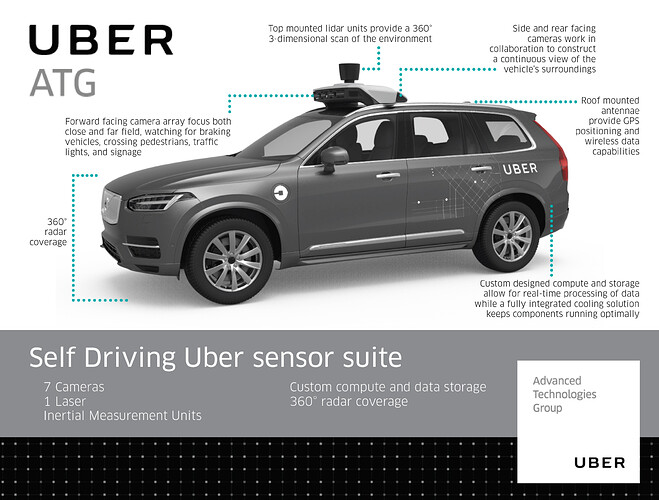One of the most common causes of car sickness or motion sickness is reading or using a tablet while sitting as a passenger in a car. While Uber has been investing billions in developing a driverless car, they have also been investing in a way to alleviate car sickness.
One of the major issues with passengers in cars is the way the mind and middle ear translate movement with eye focus. When a passenger looks at a stationary object or an object that does not move in the same way that the motion of the car is moving, the mind and inner ear start to create a dissonance, and that creates the queasiness and sickness that people feel.
While Uber has been developing thier autonomous cars and testing them in Pittsburgh with real passengers, a lot of issues were raised including the possibility of combating motion sickness. Since Uber was developing a sensory stimulation system with the way passengers could what the car sees when driving, they added some features to the software that will allow passengers to multi-task while riding.
A patent application published this month shows the concept that Uber wishes to develop. User experience design lead at Uber's Advanced Technologies Group, Molly Nix, stated that the new driving concept is about the passenger's experience and not the driver's control over power.
Nix goes on to explain what the car will do. The car's system will use all the incoming data from its cameras and sensors to create a sensory stimulation system that will synchronize the passenger's eyes with their ears. The sensory stimulation system will control seats by moving them and even vibrating them, accompanying this with bursts of air or strobing lights that will create an overall augmented reality live stream surrounding the passenger. This orchestrated environment will combat the way a passenger's body senses the movements of the car as it twists and turns, accelerates and brakes towards its destination.
Once the autonomous vehicle (AV) has become an integral part of society, the focus of passengers in the car will be around enjoying the ride, utilizing the time spent in the car for other activities. It will also take away the boredom of long drives, and save drivers a lot of fatigue driving time. The patent states: "With the advent of autonomous vehicle (AV) technology, rider attention may be focused on alternative activities, such as work, socializing, reading, writing, task-based activities (e.g., organization, bill payments, online shopping, gameplay), and the like,"
As with all new technologies, such as the introduction of the car at the turn of the 20th century, there are more detractors to the technology then there are believers. Uber states that over time people will become more and more accustomed to the new driving experience and this will overcome their initial fears. Nix stated that Uber's intention is to make the transfer from a "terrifying" or "exciting" experience into a boring one as quickly as possible. Once the passengers accept autonomous cars for what they really are, then they will accept riding in them, and maybe even prefer them to driven ones.
Our Take; For sure, once you remove the driver from the equation you also remove the need to have independent contracts, background checks and payment of driver fees. What the autonomous car does is take rideshare driving one step forward by removing the driver, but one step backward by turning Uber into a big taxi service, since the fleet has to be managed, hardware, software and car maintenance have to be constantly serviced and in good working condition. We also foresee another major impact on society in that hundreds of thousands of employed drivers will be left without work. The question is, has anyone on the hill thought about what to do with all these unemployed drivers? We cannot stop technology, the autonomous car is a fact, and it will come within the next decade. While Uber prepares passengers for driverless experiences, is anyone addressing the other issues?

